[最も人気のある!] newborn club foot causes 103056
Clubfoot is a common type of birth defect that affects muscles and bones in the feet Instead of being straight, a clubfoot points down and turns in This twisting causes the toes to point toward the opposite leg A baby can be born with the defect in one or both feet Club foot is the condition of foot deformity of the newborn child in which either or both the feet will be twisted or bent towards the toes inward The word "clubfoot" refers to the shape of head of golf club and that is how the shape of newborn child looks like Clubfoot is invariably genetic defect inherited by birthLearn the answers to these questions and more on this episode of #PhoenixChildrensL
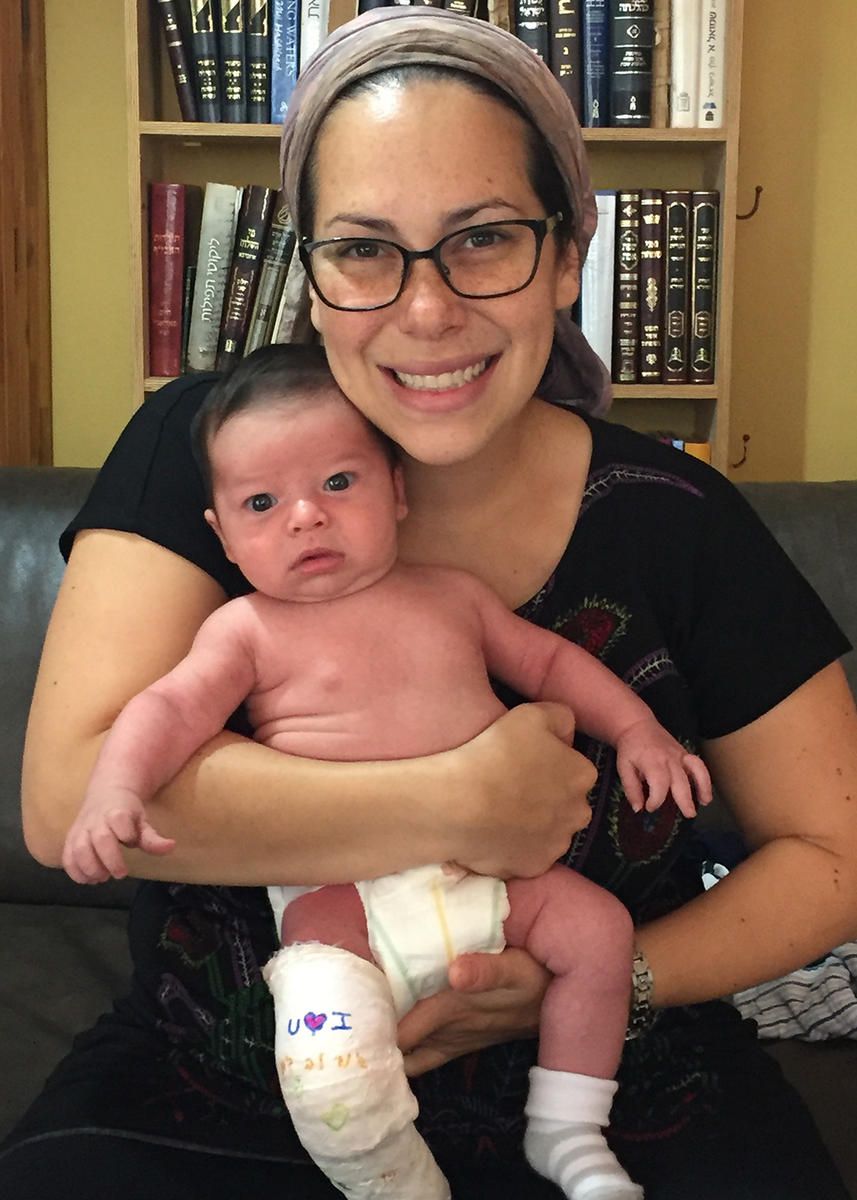
Overcoming Clubfoot One Mom S Story Parents
Newborn club foot causes
Newborn club foot causes- This term – clubfoot – is a reference to the fact that the foot is situated with a sharp direction to the ankle – reminiscent of the head of a golfing club This is a fairly common defect at birth and is normally a secluded condition of a newborn who is otherwise healthy The deformity can be severe, or very mild, affecting both or onlyCanine clubfoot, also known as congenital talipes equinovarus, is a genetically defined deformation that has more to do with the leg bone than the foot Because the front leg bone does not grow properly, the femoral structure pushes the dog's foot outward or inward This condition also can occur when a young puppy is denied a nutritious diet
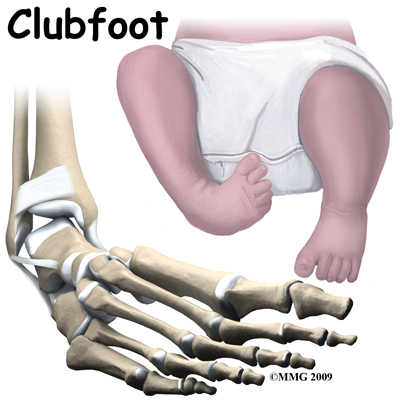



Physical Therapy In Plymouth For Pediatric Issues Clubfoot
Clubfoot is a birth defect where one or both feet are rotated inward and downward The affected foot and leg may be smaller than the other Approximately 50% of cases of clubfoot affect both feet Most of the time, it is not associated with other problems Without treatment, the foot remains deformed, and people walk on the sides of their feet This may lead to pain and difficulty walkingNot all experts agree on congenital clubfoot causes Some believe clubfoot develops because of an abnormally shaped anklebone Others think clubfoot happens because of abnormal nerve function in the leg, or because of abnormal tissues in the muscles and tendons of the foot Although it might be a genetic condition, most families show no clear In a nutshell It's relatively common for a newborn to have feet that turn inwardsThis is due to a condition called talipes or 'club foot' There are 2 key kinds of talipes positional and structural Positional talipes generally happens because your baby's feet are squashed in the womb and usually corrects itself over time
Calcaneovalgus foot is one of the most common deformities of the foot seen in newborns Babies with this condition are born with their foot and ankle excessively bent up, where the toes are usually touching the shin This deformity may also present in older children, but is usually a manifestation of another condition One popular theory postulates that a clubfoot is a result of intrauterine maldevelopment of the talus that leads to adduction and plantarflexion of the foot7 Clubfoot occurs in one to two perClub foot refers to a tendon flaw that causes the hoof to be very upright Often, club foot affects both front legs with one being more severe than the other Club foot can occur before or after birth in foals After birth foals acquire club feet when the bones grow faster than the tendons
Clubfoot most often presents at birth Clubfoot is caused by a shortened Achilles tendon, which causes the foot to turn in and under Clubfoot is twice as common in boys Treatment is necessary to correct clubfoot and is usually done in two phases — casting and bracing Complications Of Clubfoot In Babies Clubfoot alone does not cause any complication until your baby reaches the age of standing or walking The anomaly in the foot and the associated anomalies may cause the following complications Movement difficulties may occur due to less flexibility of the affected foot; baby to grow properly, this may cause clubfoot Either way, the true cause is still unknown, although if does run in the family, your baby is more likely to have it Treatment Normally, your baby will start treatment within the first week from birth Most doctors follow the Ponseti Method of treatment, which involves casting and a brace
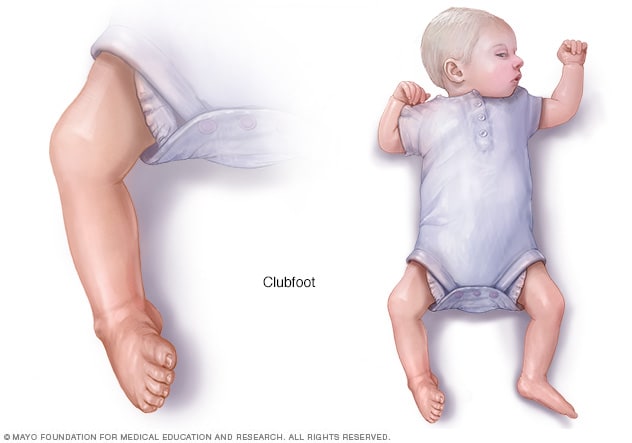



Clubfoot Symptoms And Causes Mayo Clinic
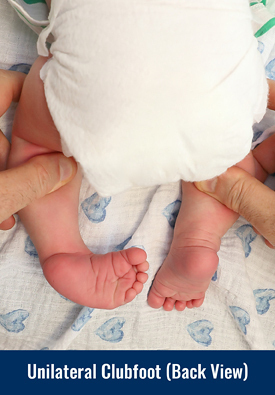



Clubfoot Baltimore Md International Center For Limb Lengthening
Clubfoot is a congenital condition that affects newborn infants The medical term for clubfoot is Congenital Talipes Equinovarus This condition has been described in medical literature since the ancient Egyptians Congenital means that the condition is present at birth and occurred during fetal development The condition is not rare and the incidence varies widely among different races In Clubfoot is a congenital foot abnormality in which the newborns' foot is twisted sidewards towards the opposite leg According to the National Institutes of Health, one in every 1000 infants is born with clubfoot, which causes them many physical problems at a later stage of life if not treated earlyClub foot can happen in one foot or in both feet In almost half of affected infants, both feet are involved Although club foot is painless in a baby, treatment should begin immediately Club foot can cause significant problems as the child grows But with early treatment most children born with club foot are able to lead a normal life



Clubfoot In Newborns Paedicare Paediatricians
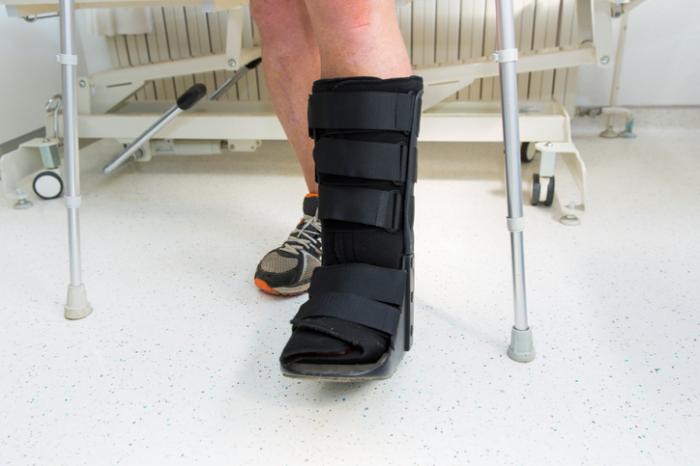



Clubfoot Causes And Treatments
The heel points down and the front half of the foot turns in The Achilles tendon (tissue that connects the heel to the muscles of the lower leg) is very tight, and calf muscles are smaller than normal Club foot affects the bones, blood vessels, muscles and tendons in the child's foot It can happen in one or both feetClubfoot is a congenital condition that affects newborn infants The medical term for clubfoot is Congenital Talipes Equinovarus This condition has been described in medical literature since the ancient Egyptians Congenital means that the condition is present at birth and occurred during fetal development The condition is not rare and the incidence varies widely among different races InClubfoot Clubfoot is a deformity in which an infant's foot is turned inward, often so severely that the bottom of the foot faces sideways or even upward Approximately one infant in every 1,000 live births will have clubfoot, making it one of the more common congenital (present at




Chromosomal Abnormality Found For Inherited Clubfoot The Source Washington University In St Louis




Clubfoot Orthopaedia
The short length of the affected leg could cause The causes of congenital clubfoot are ultimately not clear Genetic causes are discussed If there is a family predisposition, the risk of having a child with clubfoot is increased The likelihood of having a second child with a clubfoot is about 130The most common type of clubfoot is idiopathic, which means the cause is unknown Idiopathic clubfoot is not related to any other medical problems Feet of babies with this type of clubfoot are stiff and hard to manipulate Syndromic clubfoot Syndromic clubfoot occurs when the condition is part of a larger syndrome
/GettyImages-531856195-56c202e25f9b5829f867c91e.jpg)



Learn About Clubfoot Deformity In Newborns




Club Foot
Clubfoot, also known as talipes equinovarus (TEV), is a common foot abnormality, in which the foot points downward and inward It occurs twice as often in males than in females Signs of clubfoot include a short and/or tight Achilles tendon (heel cord) and a heel that is turned in Talipes equinovarus, commonly known as club foot, is a relatively common diagnosis occurring in approximately one per 1,000 births, and affects boys twice as often as girls5, 6Despite its look, however, clubfoot itself doesn't cause any discomfort or pain Club foot diagnosis Club foot is usually diagnosed after a baby is born, although it may be spotted in pregnancy during the routine ultrasound scan carried out between 18 and 21 weeks
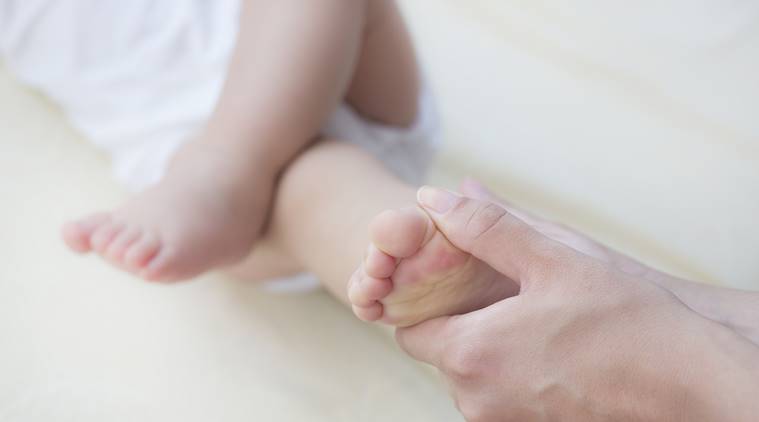



Treating Clubfoot Early May Help A Child Walk Normally Parenting News The Indian Express
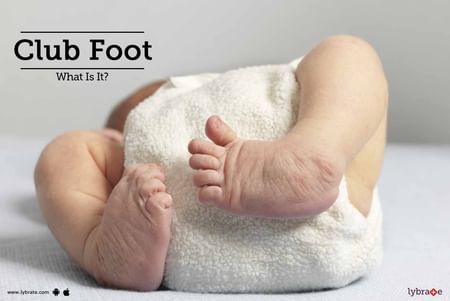



Club Foot What Is It By Dr Ravi Kant Gupta Lybrate



コメント
コメントを投稿